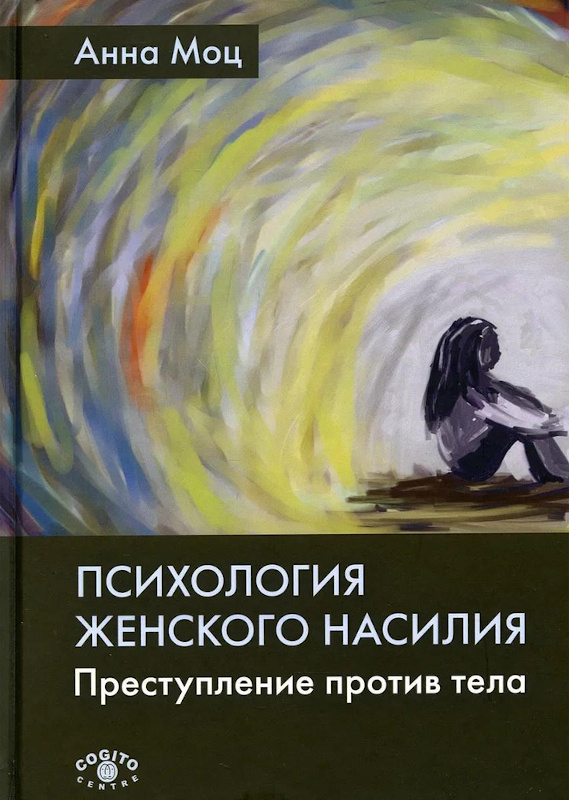Читать книгу - "Психология женского насилия. Преступление против тела - Анна Моц"
Аннотация к книге "Психология женского насилия. Преступление против тела - Анна Моц", которую можно читать онлайн бесплатно без регистрации
Книга исследует природу и причины женского насилия с точки зрения психодинамической теории и судебной психологии. Представлено теоретическое обобщение недавно произошедших, ставших общеизвестными случаев насилия женщин над собой и над детьми наряду с обсуждением разнообразного клинического материала и влияния веб-сайтов, пропагандирующих анорексию и булимию. Особое внимание уделяется вопросам разработки терапевтических услуг для женщин в закрытых психиатрических учреждениях.
Department of Health (DH, 2004). The Children Act 2004, London: HMSO. Department of Health (DH, 2006). Working Tbgetherto Safeguard Children, London: HMSO.
De Zulueta. F, (1993). From Pain to Violence: The Traumatic Roots of De-structiveness. London: Whurr.
Dobash, R. E. and Dobash, R. P. (1979). Violence Against Wives, New York: Free Press.
Dobash, R. E., Dobash, R. P. and Noaks, L. (1995). ‘Thinking about gender and crime’, in R. E. Dobash, R. P. Dobash and L. Noaks (eds). Gender and Crime. Cardiff University of Wales Press.
Dolan. B. and Gitzinger, I. (eds) (1994). Why Women? Gender Issues and Earing Disorders, London: Athlone Press.
Dolan. B. and Mitchell, E. (1994). ‘Personality disorder and psychological disturbance of female prisoners: a comparison with women referred for NHS treatment of personality’, Criminal Behavior and Mental Health 4 (2): 130-143.
D’Orban. P. T. (1979). ‘Women who kill their children’, British Journal of Psychiatry 134: 560-571.
D'Orban. P. T. (1990). ‘Female homicide’, frish Journal of Psychological Medicine 7: 64-70.
Dube. S. R., Anda, R. F., Whitfield, C. L. I., Brown, D. W., Felitti, V. J., Dong, M. and Giles, W. H. (2005). ‘Long-term consequences of childhood sexual abuse by gender of victim’, American Journal of Preventative Medicine 28 (5): 430-438.
Eminson, M. and Postlethwaite, R. J. (eds) (2000). Munchausen Syndrome by Proxy Abuse: A Practical Approach, Oxford: Butterworth-Heinemann.
Ewing, С. P. (1990). ‘Psychological self defence: a proposed justification for battered women who kill’, Law and Human Behavior 14 (6): 579-94. Ewing, С. P. (1997). Fatal Families: The Dynamics of Jntrafamilial Homicide, Thousand Oaks CA: Sage.
Fairburn, C. G., Shafran, R. and Cooper, Z. (1999). ‘A cognitive behavioral theory of anorexia nervosa’, Behavior Research and Therapy, 37: 1-13.
Farmer, E. and Owen, M. (1995). Child Protection Practice: Private Risks and Public Remedies, London: HMSO.
Faulk, M. (1988). Basic Forensic Psychiatry, Oxford: Blackwell.
Feldmann, T. B. (1988). ‘Violence as a disintegration product of the self in post-traumatic stress disorder’, American Journal of Psychotherapy 42: 281-289.
Finkelhor D. (1984). Child Sexual Abuse: New Theory and Research, New York: Free Press.
Finkelhor, D. and Ormrod, R. (2001). ‘Homicides of children and youth, Juvenile Justice Bulletin NCJ187239, Washington, DC: US Department of Justice.
Folks, D. (1995). ‘Munchausen’s syndrome and other factitious disorders’, Neurologic Clinics 13 (2): 267-281.
Follingstad, D. R., Polek, D. S., Hause, E. S., Deaton, L. H., Bulger. M. W. and Conway, Z. D. (1989). ‘Factors predicting verdicts in cases where battered women kill their husbands’, Law and Human Behavior 13 (3): 253-268.
Fonagy, P. (1991). ‘Thinking about thinking: some clinical and theoretical considerations in the treatment of a borderline patient’, international Journal of Psycho—Analysis 72:639-656.
Fonagy, P. and Target, M. (1999). ‘Towards understanding violence: the use ol the body and the role of the father’, in R. J. Perelberg (ed.). A Psychoanalytic Understanding of Violence and Suicide, London: Rout-ledge.
Fonagy, P., Steele, M. and Steele, H. (1991). ‘Maternal representations of attachment during pregnancy predict the organization of infant-mother attachment at one year of age’, Child Development 62: 891-905.
Fonagy, P., Moran, G. S. and Target, M. (1993). ‘Aggression and the psychological self, international Journal of Psycho-Analysis 74:471-485.
Fonagy, P., Steele, M., Steele, H., Leigh, T, Kennedy, R., Mattoon, G. and Target, M. (1995). The predictive validity of Mary Main’s adult attachment interview: a psychoanalytic and developmental perspective on the transgenerational transmission of attachment and borderline states’, in S. Goldberg, R. Muir and J. Kerr (eds). Attachment Theory: Social Developmental and Clinical Perspectives, Hillsdale, NJ: Analytic Press.
Ford, H. (2006). Women Who Sexually Abuse Children, Chicester: Wiley.
Foster, L. A., Mann Veale, C. and Ingram Fogel, C. (1989). ‘Factors present when battered women kill’, issues in Mental Health Nursing 10:273-384.
Freud, S. (1917). ‘Mourning and melancholia’, in On Metapsychology: The Theory of Psychoanalysis, vol. 11, Harmondsworth: Penguin.
Freud, S. (1940). ‘Splitting of the ego in the process of defence’, Standard Edition, 23, London: Hogarth Press and the Institute of Psychoanalysis.
Fualaau V. (1998). Un Seul Crime, L’Amour, Paris: Editions Fixot. English extract published in Marie Claire February 1999:49-54.
Garbarino. J. (1976). ‘A preliminary study of some ecological correlates of child abuse: the impact of socioeconomic stress on the mother’, Child Development 47: 178-185.
Garfinkel, P. E., Moldofsky, H. and Garner, D. M. (1977). The outcome of anorexia nervosa: significance of clinical features, body image and behavior modification’, in R. A. Vigersky An orexia Nervosa, New York: Raven Press.
Gamer. D. M. and Bemis, К. M. (1982). ‘A cognitive behavioral approach to anorexia nervosa’. Cognitive Therapy and Research 6: 123-150.
Garner, D. M. and Bemis, К. M. (1985). ‘Cognitive therapy for anorexia nervosa’, in D. M. Garner and P. E. Garfinkel (eds). Handbook of Psychotherapy for Anorexia Nervosa and Bulimia, New York: Guilford Press.
Gamer, D. M. and Garfinkel, P. E. (eds) (1985). Handbook of Psychotherapy for Anorexia Nervosa and Bulimia, New York: Guilford Press.
Gelles, R. J. (1980). ‘Violence in the family: a review of research in the seventies’, Journal of Marriage and the Family 42: 873-885.
Gelles, R. J. (1982). ‘Toward better research on child abuse and neglect: a response to Besharov’, Child Abuse and Neglect 6 (4): 495-496.
Gibbons, T. C. N. (1971). ‘Female offenders’, British Journal of Hospital Medicine 6: 279-286.
Gibson, E. (1975). Homicide in England and Wales 1967-1971. Home Office Research Study Ns31, London: HMSO.
Gil, D. (1970). Violence Against Children, Cambridge MA: Harvard University Press.
Gilligan, J. (1997). Violence: Reflections on a National Epidemic, New York: Vintage.
Glass, D. D. (1995).
Прочитали книгу? Предлагаем вам поделится своим впечатлением! Ваш отзыв будет полезен читателям, которые еще только собираются познакомиться с произведением.
Оставить комментарий
-
 Вера Попова27 октябрь 01:40
Любовь у всех своя-разная,но всегда это слово ассоциируется с радостью,нежностью и счастьем!!! Всем добра!Автору СПАСИБО за добрую историю!
Любовь приходит в сентябре - Ника Крылатая
Вера Попова27 октябрь 01:40
Любовь у всех своя-разная,но всегда это слово ассоциируется с радостью,нежностью и счастьем!!! Всем добра!Автору СПАСИБО за добрую историю!
Любовь приходит в сентябре - Ника Крылатая
-
 Вера Попова10 октябрь 15:04
Захватывает,понравилось, позитивно, рекомендую!Спасибо автору за хорошую историю!
Подарочек - Салма Кальк
Вера Попова10 октябрь 15:04
Захватывает,понравилось, позитивно, рекомендую!Спасибо автору за хорошую историю!
Подарочек - Салма Кальк
-
 Лиза04 октябрь 09:48
Роман просто супер давайте продолжение пожалуйста прочитаю обязательно Плакала я только когда Полина искала собаку Димы барса ♥️ Пожалуйста умаляю давайте еще !))
По осколкам твоего сердца - Анна Джейн
Лиза04 октябрь 09:48
Роман просто супер давайте продолжение пожалуйста прочитаю обязательно Плакала я только когда Полина искала собаку Димы барса ♥️ Пожалуйста умаляю давайте еще !))
По осколкам твоего сердца - Анна Джейн
-
 yokoo18 сентябрь 09:09
это прекрасный дарк роман!^^ очень нравится
#НенавистьЛюбовь. Книга вторая - Анна Джейн
yokoo18 сентябрь 09:09
это прекрасный дарк роман!^^ очень нравится
#НенавистьЛюбовь. Книга вторая - Анна Джейн





